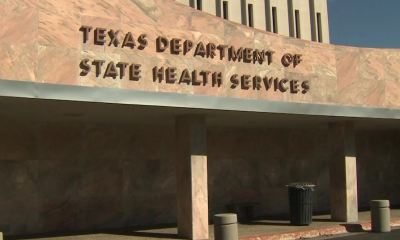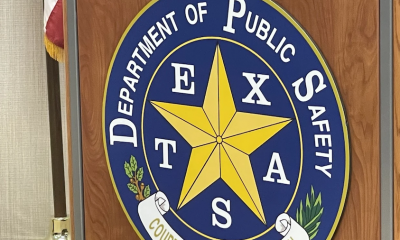U.S. News
When Texas Ended the Mask Mandate, Why Didn’t COVID-19 Cases Increase?
PLANO, TX – Since Gov. Greg Abbott ended the Texas mask mandate, COVID-19 cases have not spiked as some worried they would. Why?
The end of the mask mandate was both applauded and jeered by different segments of the population. Many were happy not to wear the masks, while some business owners worried that their employees would have to be mask enforcers. Meanwhile, conferences that had been planned for Texas decided to move locations because of the end of state-mandated masking.
But at least so far, the worst fear about the end of the mask mandate—a huge spike in new infections—hasn’t come to fruition. Cases have decreased for most of March. For the first time in almost a year, Dallas County moved its COVID-19 threat level from red to orange. Several factors are bringing case numbers down, says Dallas County Medical Director Dr. Philip Huang.
With no significant holidays through the end of winter and early spring, people are returning to a baseline amount of interaction, which is having an impact. Large, indoor gatherings don’t seem to be happening as they were in December and January. Also, vaccinations (Fair Park alone is doing 10,000 per day) have been growing, further limiting the virus’ ability to spread. Finally, Huang says many people have continued masking in public despite the end of the mandate, and most businesses continued to require face coverings. “We go with the philosophy, ‘just because you can doesn’t mean you should,’” Huang says of the end of masking.
Despite the lower numbers, both Dallas County and the nation experienced an uptick in cases since mid-March, when Spring Break began and Texas ended its mask mandate. New cases nationwide rose from around 50,000 in the middle of March to above 70,000 at the end of the month. “We’re going to have a meeting with some of the hospitals and modelers tomorrow,” Huang says. “We did see a slight increase last week, and we are hoping that doesn’t continue.”
With more contagious and potent variants on the rise, experts are encouraging everyone to stay vigilant. “The more people we can keep from getting COVID, the fewer chances the virus will have to mutate and create new variants,” says Dr. Beth Kassanoff, the president of the Dallas County Medical Society and an internist with Baylor Scott & White Health. “The variants that are out there now, specifically the one we’ve seen the most in Dallas County, have a significantly higher risk of transmission from person to person.”
UT Southwestern modeling also serves as a warning to jumping back into life as usual. The medical center’s data say that returning to pre-masking behavior and continuing the current rate of vaccinations will cause new infections and hospitalizations to grow beyond the worst peaks of the winter.
While masking hasn’t prevented all of the spread of COVID-19, it has had an impact and saved lives. According to the Centers for Disease Control and Prevention, there has been a significantly reduced flu season in the country this year. More than 140 children died from the flu each of the last three years before the pandemic, but with masking, the 2020-2021 flu season has resulted in just one pediatric death. COVID-19 is more transmissible than the average flu virus, but experts agree that masks help.
The reduced numbers will hopefully continue, especially after a year without enough good news. It will have to be a community effort.
“It’s a combination of vaccination, plus natural immunity from some people having COVID, and there are plenty of us who are still following all the rules for masking and distancing,” Kassanoff says. “We’ve learned a lot since a year ago about how to prevent it, and I think the majority of people are trying to do the right thing.”
With vaccines now open to all adults, volunteers are needed at the county’s vaccination sites, and residents are encouraged to register for the vaccine if they haven’t already received it.










